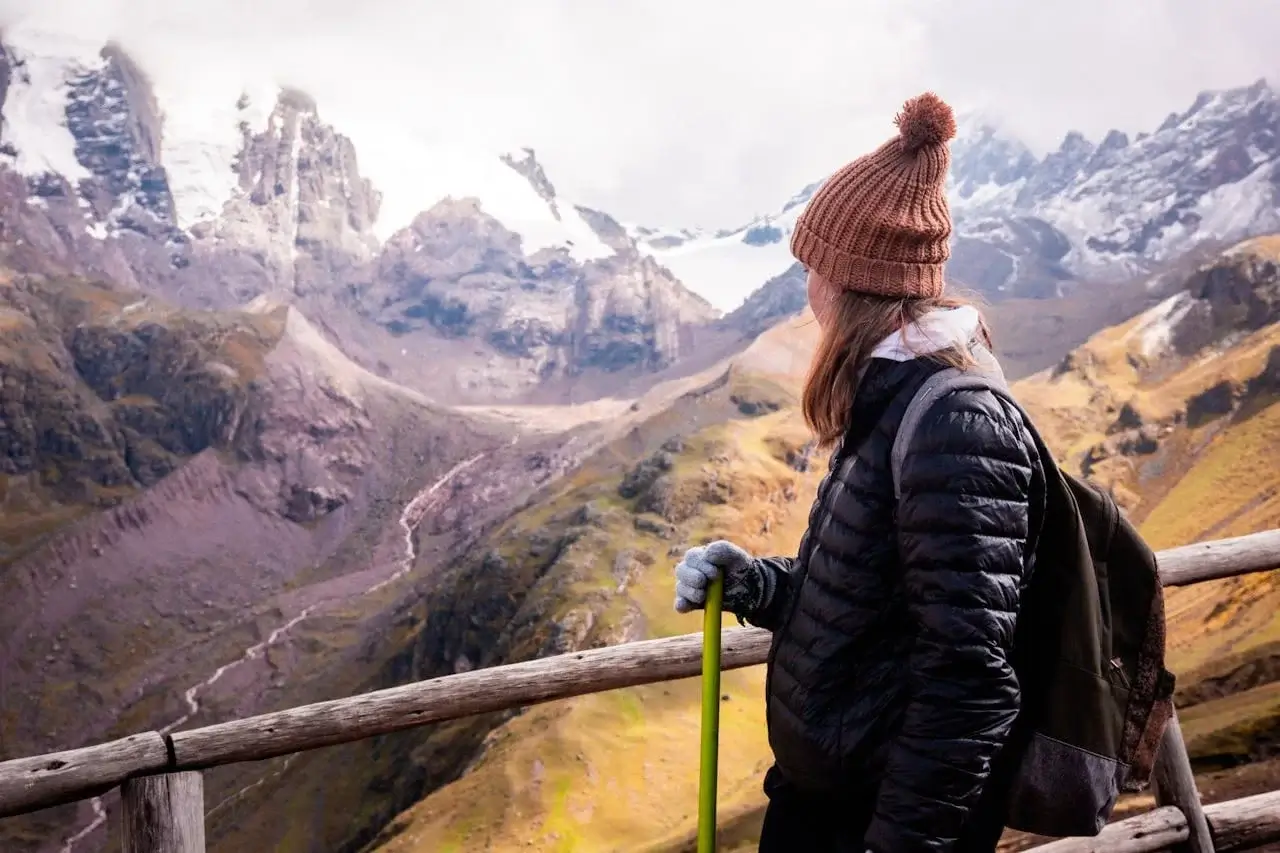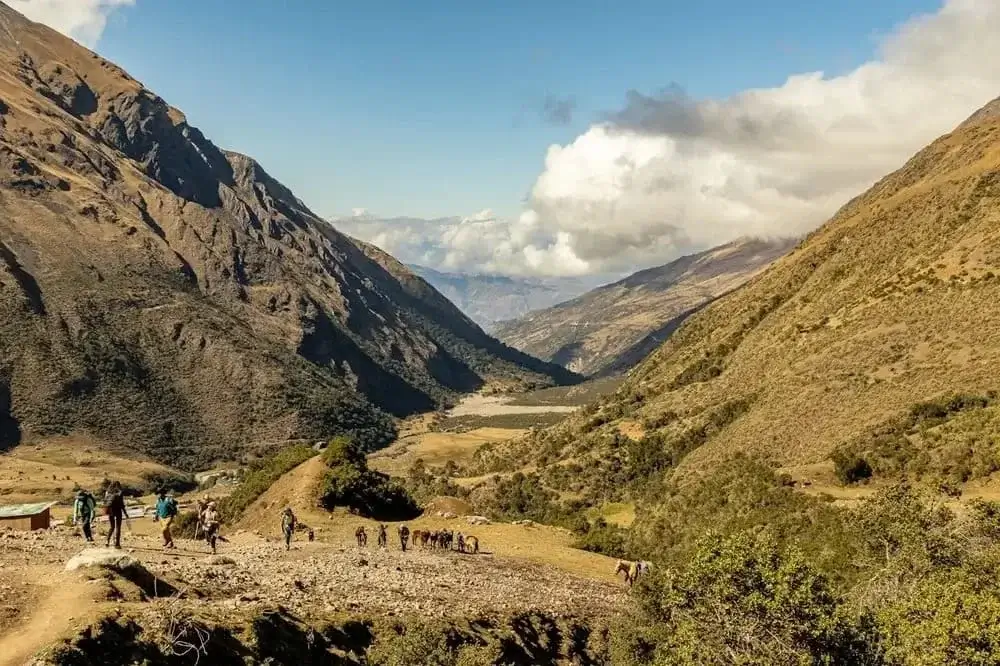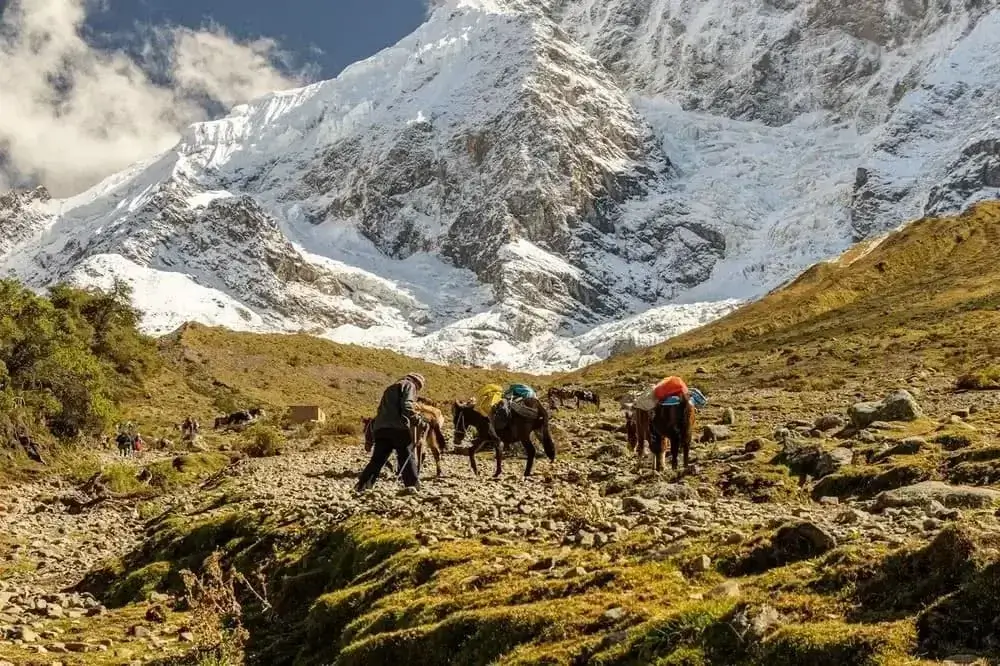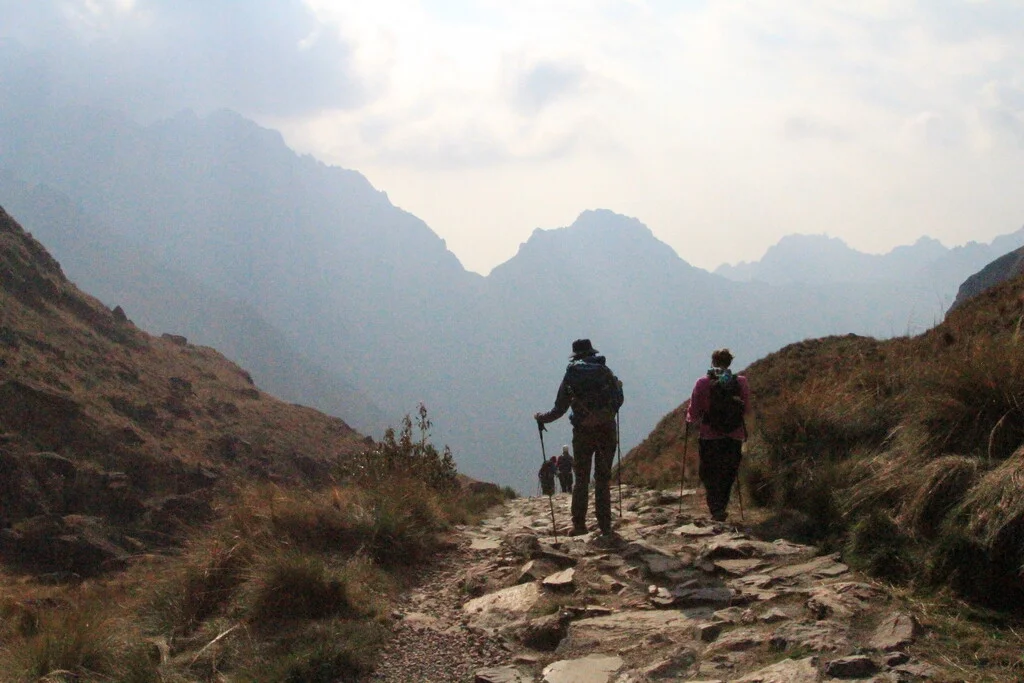Many adventurers have the desire of traveling to Machu Picchu. The Classic Inca Trail and the Salkantay Trek are two of the most well-known hikes that lead to this famous location. Each provides a special fusion of difficulties, breathtaking scenery, and cultural exposure. Your interests, degree of fitness, and the experience you're looking for will all play a role in selecting the best course. We'll examine the nuances of both treks in this in-depth guide to assist you in making an informed choice.
1. Introduction to the Treks
Classic Inca Trail
The Classic Inca Trail is a 4-day journey spanning approximately 40 km (25 miles). This ancient path was once a pilgrimage route for the Incas, leading to the sacred city of Machu Picchu. Trekkers traverse diverse terrains, including cloud forests and alpine tundra, encountering several archaeological sites along the way. Due to its popularity and historical significance, permits are limited and often sell out months in advance.
Salkantay Trek
A lengthier and more isolated option is the Salkantay Trek, which takes five to six days to complete and covers roughly 83 km (52 miles). The trail, which begins close to the magnificent Salkantay Mountain, offers a variety of scenery, including lush jungles and snow-capped summits. Permits are easier to get than for the Inca Trail, giving last-minute planners additional options.
2. Scenic Machu Picchu Hike Landscapes
Classic Inca Trail
Hikers experience a mix of high Andean passes and subtropical forests. The trail is adorned with well-preserved Inca ruins, such as Wiñay Wayna, and culminates at the Sun Gate (Inti Punku) with a breathtaking view of Machu Picchu.
Salkantay Trek
This route boasts dramatic scenery, including the towering Salkantay Pass at 4,635 meters (15,206 feet), serene glacial lakes like Humantay, and rich biodiversity as the trail descends into the cloud forest.
3. Difficulty and Physical Demands
Classic Inca Trail
Considered moderately challenging, the highest point is Dead Woman's Pass at 4,215 meters (13,829 feet). Trekkers should be prepared for steep ascents and descents, with some sections involving stone steps.
Salkantay Trek
More demanding due to its length and higher altitudes, reaching up to 4,635 meters (15,206 feet). The trail includes rugged terrains and longer daily distances, requiring good acclimatization and fitness.
4. Cultural Experiences
Classic Inca Trail
Rich in historical significance, trekkers visit multiple Inca sites, gaining insights into ancient engineering and religious practices. The trail itself is a testament to Incan ingenuity.
Salkantay Trek
While less focused on ruins, this trek offers authentic interactions with local Andean communities, providing a glimpse into traditional lifestyles and customs.
5. Availability and Permits
Classic Inca Trail
The Classic Inca Trail is highly regulated by the Peruvian government to preserve its historical and ecological significance. There is a strict limit of 500 permits per day, which includes trekkers, guides, porters, and cooks. Due to its popularity, permits often sell out up to six months in advance, especially for the high season from May to September. To secure a spot, it is essential to book early with an authorized tour operator, as independent trekking is not allowed.
The trail is closed every February for maintenance and conservation efforts.
Salkantay Trek
Unlike the Inca Trail, the Salkantay Trek has no permit restrictions, making it accessible year-round. This flexibility allows for more spontaneous travel plans, though the best trekking conditions are from April to October, during the dry season. Despite the lack of permit requirements, it is strongly recommended to book with a reputable agency to ensure safety, proper logistics, and quality guidance.
Agencies provide experienced guides, transportation, meals, and camping equipment, which significantly enhance the trekking experience. While no official restrictions exist, certain sections may require entrance fees, particularly for Machu Picchu at the end of the trek.
6. Best Time to Trek
The best time to hike both the Classic Inca Trail and the Salkantay Trek is during the dry season, which runs from April to October. This period offers clear skies, minimal rainfall, and comfortable daytime temperatures, making for ideal trekking conditions.
- April & May: The landscapes are particularly lush and vibrant after the rainy season, with fewer crowds compared to peak months.
- June to August: This is the busiest period, coinciding with the high tourist season. While the weather is excellent, expect larger crowds and limited availability for Inca Trail permits.
- September & October: A great balance of good weather and fewer hikers, making it a preferred time for those seeking a more peaceful trek.
The rainy season from December to March presents challenges, as trails can become slippery, muddy, and more difficult to navigate. Additionally, the Inca Trail is closed in February for maintenance. However, Salkantay remains open year-round, though trekking during this season requires extra preparation and proper rain gear.
7. Comparative Overview: Salkantay vs Inca Trail
| Aspect | Classic Inca Trail | Salkantay Trek |
|---|---|---|
| Duration | 4 days | 5-6 days |
| Distance | ~40 km (25 miles) | ~83 km (52 miles) |
| Highest Elevation | 4,215 m (13,829 ft) at Dead Woman's Pass | 4,635 m (15,206 ft) at Salkantay Pass |
| Permit Requirement | Mandatory, limited availability | Not required |
| Cultural Highlights | Multiple Inca ruins, historical significance | Interaction with local communities |
| Scenery | Cloud forests, alpine tundra, Inca ruins | Snow-capped mountains, glacial lakes, cloud forests |
| Difficulty Level | Moderate | Challenging |
8. Recommendations
Preparation: Whichever hike you go on, physical preparation is crucial. To increase endurance, spend a few weeks before to your trip doing regular cardiovascular (like cycling or running) and strength training (such working on your legs and core).
Furthermore, acclimatization is essential for trekking in the Andes. Before beginning your walk, stay in Cusco for at least two to three days to give your body time to acclimate to the higher elevation. This lessens the possibility of altitude sickness, which even experienced tourists may experience. Avoid strenuous activity and drink plenty of water during this period.
- Take a look at our full blog on Inca Trail Tips & Insights
Gear: Investing in high-quality hiking gear is crucial for comfort and safety. Consider the following essentials:
- Hiking Boots: Choose sturdy, waterproof boots with good ankle support, as the terrain can be uneven and challenging.
- Layered Clothing: The weather can change rapidly, so pack breathable base layers, insulating mid-layers, and a windproof, waterproof outer layer to stay comfortable throughout the trek.
- Rain Gear: A lightweight, waterproof jacket and pants will be essential, especially if trekking during the rainy season.
- Backpack: A comfortable, well-fitted daypack is ideal for carrying essentials such as water, snacks, camera, and personal items.
- Trekking Poles: These can help improve stability on rough or uneven terrain, reducing the strain on your knees during descents.
Booking:
- Inca Trail: It's imperative to obtain your permission and make your reservation through a certified tour operator as soon as possible because permits are extremely limited and frequently sell out months in advance. This confirms that you meet all government standards and that you will have a spot.
- Salkantay Trek: Although permits are not needed for the Salkantay Trek, it is strongly advised to make reservations through a reliable service. They guarantee your safety while trekking, offer knowledgeable guides, and handle necessary practicalities like meals and transportation. A well-run agency will improve your entire experience by providing guidance and assistance all along the way.
- Read our blog on The Best Hikes in Peru
Both the Salkantay Trek and the Classic Inca Trail offer unparalleled journeys to Machu Picchu, each catering to different preferences. The Inca Trail is ideal for those seeking a historically immersive experience with manageable physical demands. In contrast, the Salkantay Trek appeals to adventurers desiring solitude amidst diverse and challenging landscapes.
Which trek aligns best with your sense of adventure and fitness level? Whether you seek history or rugged beauty, your dream journey to Machu Picchu awaits.
Start planning your unforgettable Peruvian adventure today contact us for expert guidance and bespoke itineraries!




